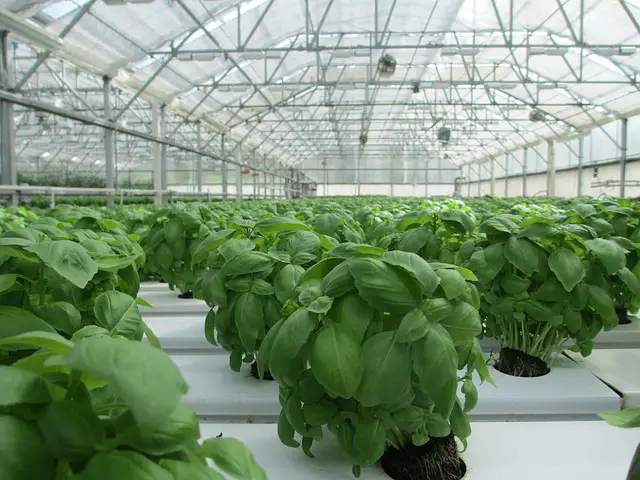Cultivating Green Spaces Indoors: The Rise of Indoor Greenhouses + List of Indoor Plants


In an era marked by urbanization and environmental consciousness, the concept of indoor greenhouses has emerged as a compelling solution for bringing nature closer to home while addressing challenges such as food security, air quality, and mental well-being. Indoor greenhouses offer a versatile and sustainable means of cultivating plants year-round, regardless of external conditions, while providing a host of benefits for individuals, communities, and the environment. Let’s explore the burgeoning trend of indoor greenhouses and their potential to transform our indoor spaces into vibrant hubs of greenery and productivity.

Page Contents
Cultivating Green Spaces Indoors: The Rise of Indoor Greenhouses
Bringing Nature Indoors:
Indoor greenhouses, also known as indoor gardens or grow rooms, provide a controlled environment for growing a wide variety of plants, from herbs and vegetables to ornamental flowers and succulents. By harnessing technologies such as LED grow lights, hydroponics, and automated climate control systems, indoor greenhouses enable plant growth and cultivation in indoor settings, irrespective of external factors such as weather, seasonality, or limited outdoor space.
Benefits of Indoor Greenhouses:
- Year-Round Growing: Indoor greenhouses offer the ability to grow plants year-round, regardless of climate or weather conditions. This ensures a consistent supply of fresh produce and herbs, reducing reliance on seasonal availability and transportation.
- Space Efficiency: Indoor greenhouses make efficient use of indoor space, making them ideal for urban dwellers or those with limited outdoor space. Vertical gardening systems and compact designs maximize growing area while minimizing footprint.
- Improved Air Quality: Indoor plants act as natural air purifiers, filtering out pollutants and toxins from indoor air and improving overall air quality. This can contribute to a healthier indoor environment and reduce the risk of respiratory ailments.
- Enhanced Mental Well-being: Research has shown that exposure to indoor plants can have positive effects on mental health and well-being, reducing stress, anxiety, and fatigue. Indoor greenhouses provide a therapeutic escape from the hustle and bustle of modern life, creating tranquil green spaces within the home or workplace.
- Sustainable Food Production: Growing food indoors reduces the need for long-distance transportation and minimizes food waste associated with spoilage and packaging. Indoor greenhouses can promote sustainable food production practices, including organic farming, regenerative agriculture, and circular economy principles.
Applications of Indoor Greenhouses:
Indoor greenhouses have a wide range of applications across various sectors, including:
- Residential: Indoor greenhouses allow homeowners to grow their own fresh produce, herbs, and flowers year-round, enhancing self-sufficiency and reducing reliance on store-bought goods.
- Commercial: Indoor greenhouses are increasingly being utilized in restaurants, cafes, and grocery stores to produce fresh ingredients on-site, providing customers with locally sourced and sustainably grown food options.
- Educational: Indoor greenhouses serve as valuable educational tools for teaching students about plant biology, ecology, and sustainable agriculture. They provide hands-on learning experiences and promote environmental awareness and stewardship.
- Therapeutic: Indoor greenhouses are used in healthcare settings, rehabilitation centers, and wellness facilities to promote healing and relaxation through horticultural therapy programs.
Creating an indoor greenhouse provides an opportunity to grow a wide variety of plants, from edible herbs and vegetables to ornamental flowers and foliage.
Here’s a list of 25 plants that thrive in indoor environments:
Edible Plants:
- Basil (Ocimum basilicum): A popular culinary herb with aromatic leaves, ideal for adding flavor to dishes.
- Mint (Mentha spp.): A refreshing herb with a variety of flavors, including peppermint and spearmint, perfect for teas, cocktails, and desserts.
- Cherry Tomatoes (Solanum lycopersicum): Compact tomato varieties suitable for indoor cultivation, producing sweet and juicy fruits.
- Lettuce (Lactuca sativa): Leafy greens such as butterhead, romaine, and leaf lettuce thrive in indoor environments, providing a continuous supply of fresh salad greens.
- Microgreens: Nutrient-rich greens harvested at an early stage of growth, including broccoli, radish, and kale microgreens, ideal for adding flavor and nutrition to salads and sandwiches.
- Scallions (Allium fistulosum): Easy-to-grow onions with mild flavor, perfect for adding a fresh kick to soups, salads, and stir-fries.
- Chives (Allium schoenoprasum): A versatile herb with mild onion flavor, excellent for garnishing dishes and flavoring sauces and dips.
- Peppers (Capsicum spp.): Dwarf pepper varieties, such as bell peppers and chili peppers, thrive in indoor environments, producing vibrant fruits for cooking and snacking.
- Cilantro (Coriandrum sativum): A pungent herb used in Mexican, Asian, and Middle Eastern cuisines, prized for its distinctive flavor and aroma.
- Spinach (Spinacia oleracea): Nutrient-packed leafy greens rich in vitamins and minerals, suitable for salads, smoothies, and cooked dishes.
Ornamental Plants:
- Spider Plant (Chlorophytum comosum): A low-maintenance houseplant with long, arching leaves and spider-like foliage, known for its air-purifying properties.
- Snake Plant (Sansevieria trifasciata): A hardy succulent with upright, sword-shaped leaves, tolerant of low light and neglect.
- Peace Lily (Spathiphyllum spp.): A popular indoor plant with glossy, dark green leaves and white, lily-like flowers, known for its ability to improve indoor air quality.
- Philodendron (Philodendron spp.): A versatile group of tropical plants with lush foliage and vining habits, suitable for hanging baskets or climbing trellises.
- ZZ Plant (Zamioculcas zamiifolia): A low-maintenance plant with glossy, dark green leaves and a unique architectural form, tolerant of low light and infrequent watering.
- Pothos (Epipremnum aureum): A fast-growing vine with heart-shaped leaves, adaptable to a wide range of indoor conditions, perfect for cascading from shelves or hanging baskets.
- Aloe Vera (Aloe barbadensis miller): A succulent plant with fleshy leaves containing a gel-like substance with medicinal properties, ideal for soothing sunburns and skin irritations.
- Fiddle Leaf Fig (Ficus lyrata): A trendy houseplant with large, violin-shaped leaves, prized for its dramatic foliage and sculptural form.
- Monstera (Monstera deliciosa): A tropical plant with large, perforated leaves and aerial roots, known for its unique foliage and easy-care nature.
- Chinese Money Plant (Pilea peperomioides): A charming houseplant with round, pancake-shaped leaves and a distinctive upright growth habit, perfect for tabletops and shelves.
Herbal Plants:
- Rosemary (Rosmarinus officinalis): A fragrant herb with needle-like leaves, prized for its aromatic flavor and culinary versatility.
- Thyme (Thymus vulgaris): A culinary herb with small, aromatic leaves, ideal for seasoning meats, soups, and stews.
- Lavender (Lavandula spp.): A fragrant herb with aromatic flowers and foliage, valued for its soothing scent and therapeutic properties.
- Oregano (Origanum vulgare): A flavorful herb with pungent leaves, perfect for adding depth of flavor to Italian and Mediterranean dishes.
- Sage (Salvia officinalis): A versatile herb with silvery-green leaves and a savory flavor, excellent for seasoning poultry, stuffing, and sauces.
Flowering Plants:
BONUS: African Violet (Saintpaulia spp.): A popular flowering houseplant with fuzzy leaves and colorful
Conclusion:
Indoor greenhouses represent a versatile and sustainable solution for bringing the benefits of nature indoors, fostering connections with plants, and promoting environmental stewardship. Whether used for food production, air purification, or mental well-being, indoor greenhouses have the potential to transform indoor spaces into thriving green oases that benefit individuals, communities, and the planet. As the trend towards urbanization continues, indoor greenhouses offer a promising avenue for reconnecting with nature and cultivating a greener, healthier future for all.







